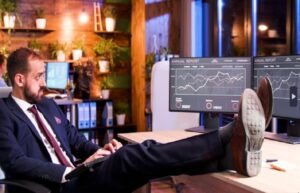How to Choose a Currency Pair for Forex Trading

So, you’ve decided to dive into the world of forex trading, huh? Well, buckle up because it’s a wild ride! But before you start dreaming of yachts and exotic vacations, there’s a crucial decision to make – choosing the right currency pair. It’s not as simple as picking your favorite color; it requires a bit of finesse and understanding. In this guide, we’re going to break down the nitty-gritty of “How to Choose a Currency Pair for Forex Trading.” Let’s navigate this financial jungle together and find the perfect pair to set your trading journey on fire!
Understanding the Basics
Know Thyself!
Before you jump into the vast ocean of forex, take a good look in the mirror and ask yourself, “What kind of trader am I?” Are you the patient type, willing to ride out the waves for the big catch? Or are you the adrenaline junkie, looking for quick wins and losses? Your trading style will play a significant role in choosing the right currency pair. Here’s a quick breakdown:
Major Pairs: These include the most traded currencies globally, like the EUR/USD or USD/JPY. They offer stability and liquidity, perfect for the more patient trader.
Minor Pairs: These don’t involve the US dollar but still pack a punch. If you’re willing to take a bit more risk, pairs like EUR/GBP or AUD/JPY might be your jam.
Exotic Pairs: For the daredevils out there, these involve a major currency and one from a developing economy. Think USD/TRY or EUR/SEK. Exotics can be volatile, so be prepared for a rollercoaster.
The Economic Landscape
Now, let’s put on our economic detective hats. Every currency pair is influenced by economic factors, like interest rates, GDP, employment rates, and inflation. Keep an eye on these key indicators for each country in your chosen pair. Here’s a sneak peek into the economic landscape:
Interest Rates: Central banks set interest rates, affecting currency values. If a country raises its rates, its currency usually strengthens.
GDP (Gross Domestic Product): The overall health of a country’s economy is reflected in its GDP. A growing economy often means a stronger currency.
Employment Rates: Low unemployment rates generally indicate a robust economy, making the currency more attractive.
Inflation: Keep tabs on inflation rates; moderate inflation is usually good, but high inflation can erode currency value.
Correlation Counts
Picture this: you’re at a party, and suddenly, you notice two people who always seem to be together. That’s correlation for you! In the forex world, it means that certain currency pairs tend to move in the same direction. Understanding these correlations can help you manage risk. For example:
Positive Correlation: Pairs move in the same direction. If one goes up, the other likely does too. An example is EUR/USD and GBP/USD.
Negative Correlation: Pairs move in opposite directions. When one goes up, the other tends to go down. Think USD/JPY and EUR/USD.
No Correlation: Some pairs just dance to their own beat, moving independently. USD/JPY and GBP/CHF might be examples.
Navigating Risk and Reward
Volatility Vibes
Are you the kind of person who loves surprises? Well, in forex, volatility is the spice of life. Volatility refers to the degree of variation in a trading price series over time. If you can handle the heat, more volatile pairs might be your thing. On the other hand, if you prefer a more predictable ride, stick to the less volatile options.
High Volatility Pairs: Exotic pairs and certain crosses can be quite the rollercoaster. They offer high risk but the potential for high reward.
Low Volatility Pairs: Majors like EUR/USD and USD/JPY are more stable. Perfect for those who like a calm, steady journey.
Spread the Love (and Costs)
Imagine you’re at a buffet, and the cost of each dish varies. Well, welcome to the forex market, where the spread is the cost of trading. The spread is the difference between the bid and ask prices. Some pairs have wider spreads than others, and this can impact your bottom line.
Tight Spreads: Major pairs often have tight spreads, making them cost-effective. Perfect for frequent traders.
Wider Spreads: Exotic pairs and less-traded currencies may have wider spreads. Be aware of the cost before diving in.
And there you have it, fellow forex adventurer! Choosing the right currency pair is your passport to the thrilling world of trading. Consider your trading style, understand the economic landscape, and embrace the volatility that makes this market so electrifying. Whether you’re into majors, minors, or exotics, there’s a pair out there with your name on it.







